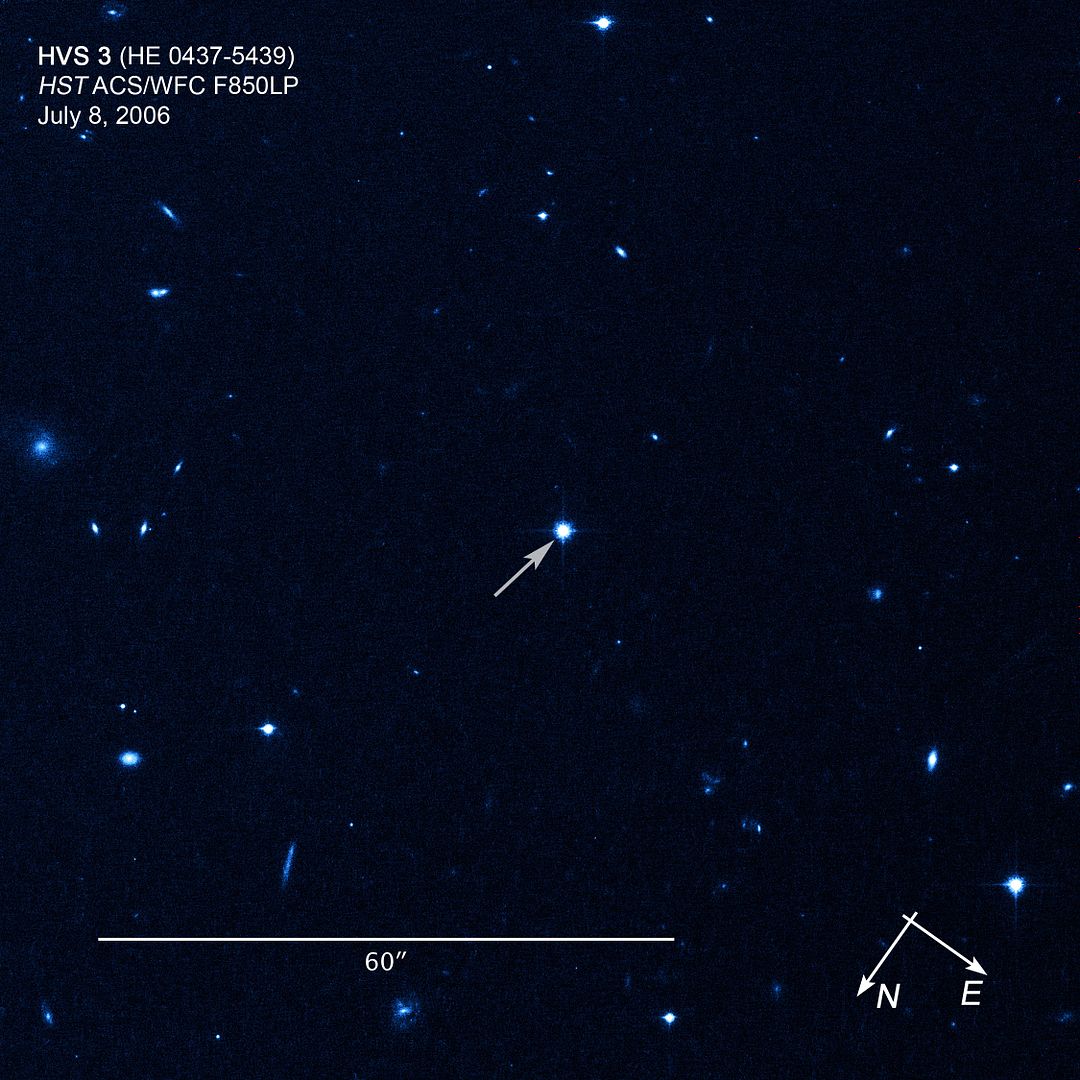
Posted on 01/19/2011 5:30:39 PM PST by ErnstStavroBlofeld
A hundred million years ago, a triple-star system was traveling through the bustling center of our Milky Way galaxy when it made a life-changing misstep. The trio wandered too close to the galaxy's giant black hole, which captured one of the stars and hurled the other two out of the Milky Way. Adding to the stellar game of musical chairs, the two outbound stars merged to form a super-hot, blue star.
This story may seem like science fiction, but astronomers using NASA's Hubble Space Telescope say it is the most likely scenario for a so-called hypervelocity star, known as HE 0437-5439, one of the fastest ever detected. It is blazing across space at a speed of 1.6 million miles (2.5 million kilometers) an hour, three times faster than our Sun's orbital velocity in the Milky Way. Hubble observations confirm that the stellar speedster hails from the Milky Way's core, settling some confusion over where it originally called home.
Most of the roughly 16 known hypervelocity stars, all discovered since 2005, are thought to be exiles from the heart of our galaxy. But this Hubble result is the first direct observation linking a high-flying star to a galactic center origin
(Excerpt) Read more at sciencedaily.com ...

You bet. There are videos out there that depict the sized of stars compared to ours...The size of some of these stars are almost beyond comprehension.
Thanks for that.


M-13 is a Globular star cluster in the Constellation Hercules, which contains several hundred thousand stars. This system is approximately 25,000 light years from earth. Many of the stars in this image, are much larger than our own sun.
10"SCT-15x20s calibrated and combined in DSS. 6.3focal reducer, with LPfilters, Canon 40D @ISO800.
I’m a lifelong insomniac and I’ve found that wandering the universe is a great way to get to sleep.
Lately I’ve been thinking about conditions that would make life possible on a planet tidally locked to its sun. One I came up with that’s interesting to think about is a planet orbiting close to a red dwarf which in turn orbited a giant. If the stars were far enough apart you could get a planet with a stable orbit. The planet would have one side in perpetual sunlight and the opposite hemisphere would have a day/night cycle which would equal its year.
Obviously the variables are incalculable but its fun to think about.
Lyrics from Built To Spill ("Randy Described Eternity")
So we're going about 150 miles per second. It doesn't feel like it.
Thanks Crip, I’ll check it out.
I don’t worry too much about that, as I’m really confident life exists amongst the hundreds of billions of star systems throughout the universe. Even with our primitive technology, I think we’ve already discovered over 800 planets orbiting other stars, right in our own neighborhood. Given this fact, I would assume there are literally multiple trillions of planets where life might be possible.
The new worlds atlas on the site is pretty cool too. Kind of a 3-D map showing where the known exoplanets are in relation to us.


Of course they
KNOW such things sooooooooooooo emphatically
because they’ve been there and taken close measurements.
LOL.
lol, yes I saw it.
That is very humbling. Puts things in perspective quite well. Thanks.
Nice pic.
That’s a huge star. Is there any speculation as to when it’s going to blow up?

It takes the Solar System 200-250 million years to orbit the Milky Way
Thanks. When I processed the data, I honestly didn’t expect to see it’s companion star due to focus issues prior to the shot.
We’re going about 18 miles per second around the sun. I’m getting dizzy.
Disclaimer: Opinions posted on Free Republic are those of the individual posters and do not necessarily represent the opinion of Free Republic or its management. All materials posted herein are protected by copyright law and the exemption for fair use of copyrighted works.